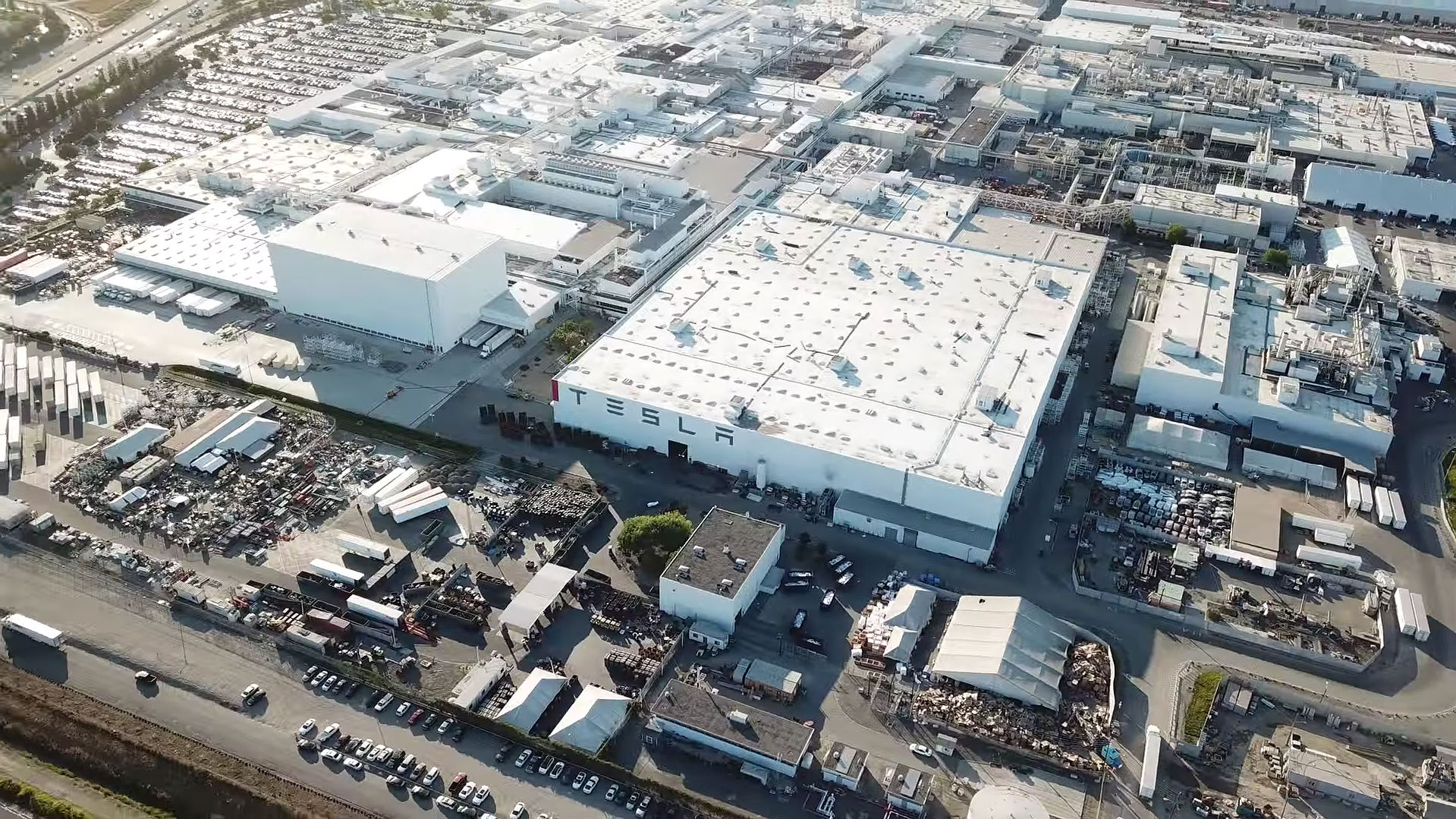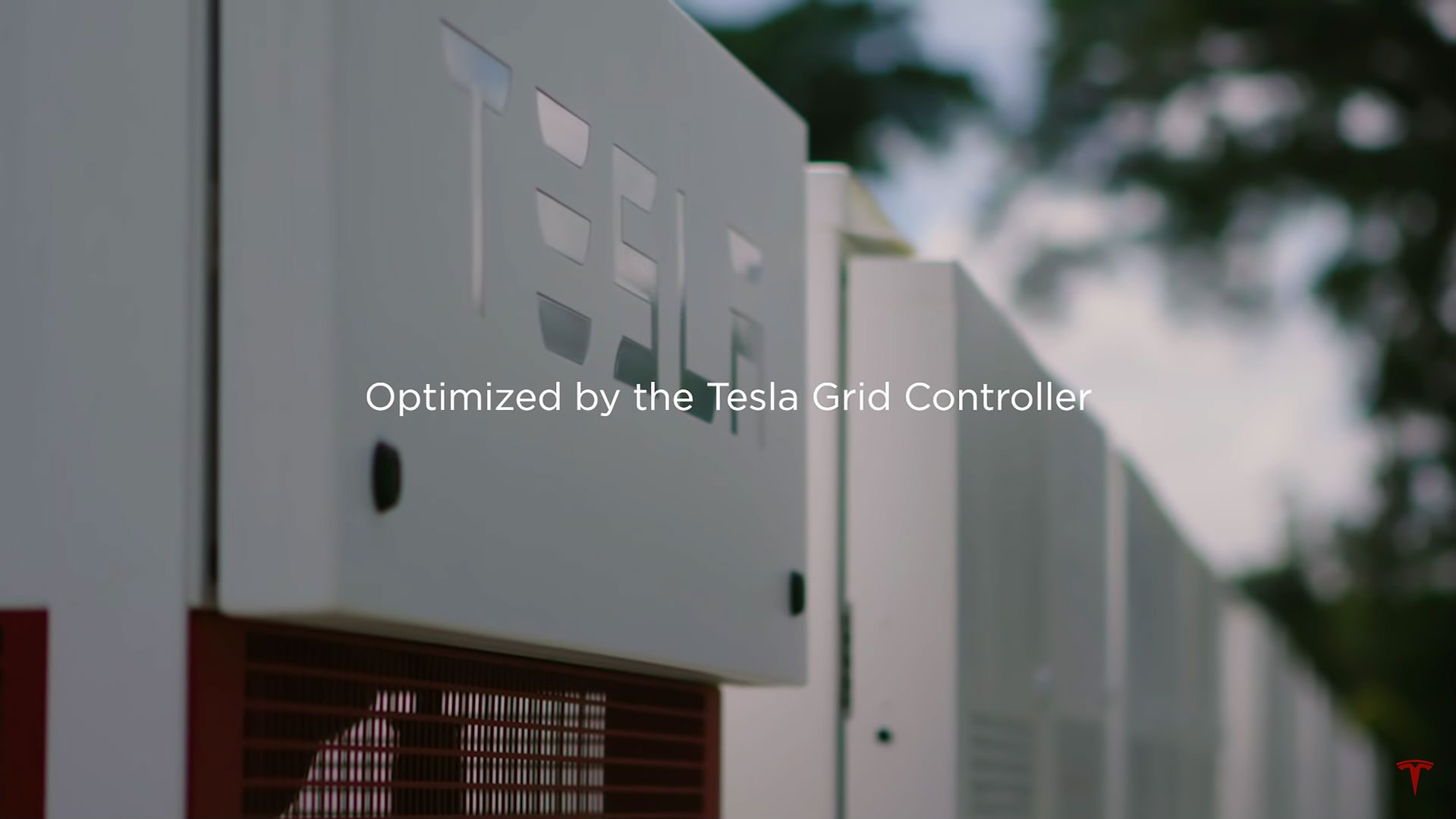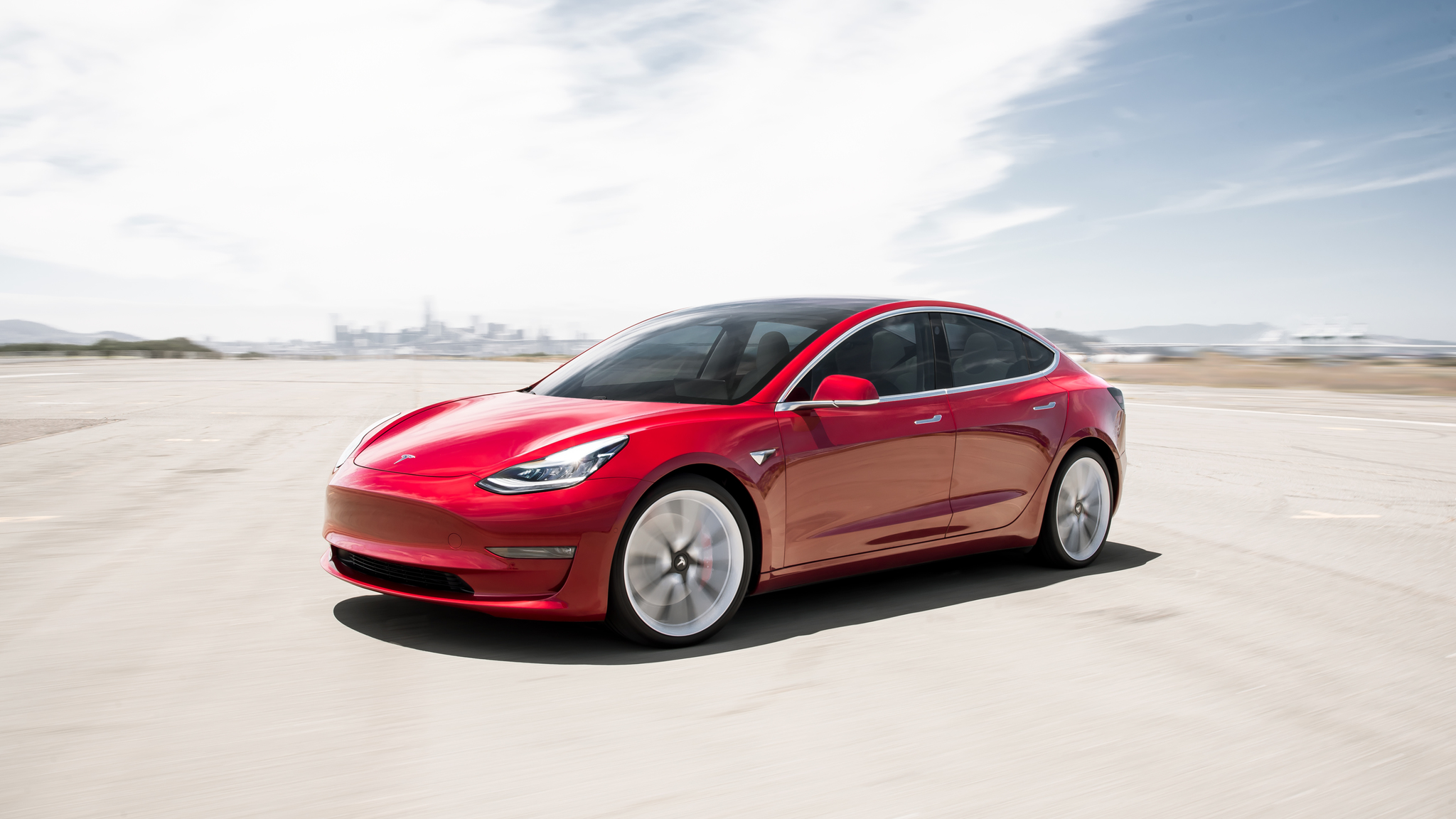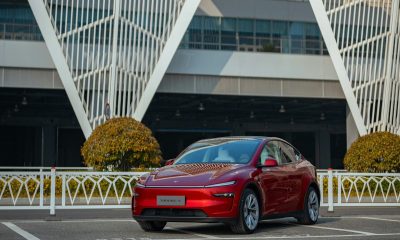

Investor's Corner
Tesla’s mission is bearing fruit despite escalating attacks from critics
Elon Musk dubs Tesla as a company aiming to accelerate the world’s transition to sustainable transportation and energy. Since the company started with the original Roadster, Tesla has courted as many dedicated critics as it does supporters. A “Tesla Death Watch” was even published by an online publication back in 2008 as the traditional auto industry waited on what appeared to be the inevitable fall of Tesla.
As history would show, such as thing never came to pass. The Model S was released, followed by the Model X, and now, the Model 3. While the rollout of each of these vehicles was all but problem-free, the electric cars eventually made it to market, and once they did, they were received very well by Tesla’s consumer base. Tesla has grown significantly since the days of the original Roadster and the first-generation Model S, with the company recently manufacturing 5,000 Model 3 in a week during the end of Q2 2018.
In an interview with Bloomberg Businessweek, Tesla CEO Elon Musk stated that the Model 3 ramp was a “bet-the-company” situation, where the failure of the car would have resulted in the electric car company’s crash. During the same interview, Musk also noted that he believes the Model 3 ramp, which has left him with permanent mental scar tissue, is close to leaving production hell. With signs that the company is now attempting to sustain its capability to manufacture 6,000 Model 3 per week, such as more than 19,000 new VIN registrations during the first two weeks of July, Musk’s statements appear to be accurate.
Despite these, Tesla has been met with continued criticism at every turn. A look at the company’s stock performance in July is indicative of just how divisive the company continues to be. Elon Musk has spent the last few months calling out what he believes is a bias in mainstream media about negative coverage on Tesla’s electric cars. This culminated in a period last May when the CEO openly clashed with journalists on Twitter after Musk suggested that he would start a website evaluating the credibility of news reporters, similar to how Yelp works with businesses. The aftermath of these clashes is still felt today, as proven by a New York Post article published last July 21 dubbing Musk as a complete “fraud.”
In social media, Tesla remains as divisive. Twitter alone is a platform where Tesla’s bulls and bears collide pretty much on an everyday basis. Since the departure of noted Tesla short-seller Montana Skeptic after Elon Musk allegedly called his boss to complain, efforts to undermine the company’s progress have escalated. Today, there is a group keeping the Burbank Airport, a lot used by Tesla to store its vehicles before delivering them to customers across the United States, under 24/7 surveillance. Latrilife, the person conducting the surveillance, claimed on Twitter that he has 350 employees and he deploys 2-person teams to document activity inside the airport lot. Critics of the company are under the impression that lots filled with Model 3 — the Burbank Airport being one of them — were proof that demand for the vehicle was decreasing and that customers are refusing delivery. The misinformation surrounding Tesla in social media has been so prevalent recently that even Vertical Research Group analyst Gordon L. Johnson ended up publishing an inaccurate note to clients about Tesla.

Amidst all this noise and the sensational headlines that Elon Musk triggers on Twitter, Tesla as a company has been quietly making progress in its goal to push the world closer to sustainability. Tesla Energy, a branch of the company that rarely makes the news, was lauded recently by Samoa for helping the island state reach its eventual goal of being powered 100% by renewable energy. During the 2018 Annual Shareholder Meeting, Elon Musk mentioned that another 1 GWh energy project would be announced in the near future. CTO JB Straubel also reaffirmed Tesla’s stance on the residential solar market, stating that the company is in no way stepping back from the residential energy industry.
Tesla’s vehicles are also starting to change the very perception of what cars can do. Jared Ewy, whose video of his family reacting to a surprise Model 3 became near-viral and attracted a Like from Elon Musk, noted in a blog post that he is in no way a “car guy.” Ewy wrote, however, that once he experienced a Tesla Model S, he knew that it was something different. That was why when the Model 3 became available; he opted to order the vehicle immediately. Professional auto journalists are giving Tesla’s vehicles their due as well, with the Model 3 Performance getting rave reviews from seasoned professionals. Among these is the Wall Street Journal‘s Dan Neil, who wrote a glowing review of the high-performance electric car (Neil eventually shut down his Twitter account amidst badgering from short-sellers and Tesla critics).
Even abroad, Tesla’s brand is becoming synonymous with forward-thinking companies that care about the future. In China, Tesla recently released its “Eagle Plan,” a role-playing program designed for children aged 5-12 that would enable kids to be familiar with the company’s products and sustainable energy solutions as a whole. According to information shared by Tesla owner @vincent13031925 on Twitter, the children’s program aims to educate and foster understanding of the company’s corporate mission, as well as its environmental protection significance. In South Australia, a plan is now underway to provide free solar panels and Powerwall 2 batteries to 50,000 low-income housing units as part of a virtual power plant, which could lower electricity bills in the region while providing backup power to the grid.
Elon Musk
Tesla analysts believe Musk and Trump feud will pass
Tesla CEO Elon Musk and U.S. President Donald Trump’s feud shall pass, several bulls say.

Tesla analysts are breaking down the current feud between CEO Elon Musk and U.S. President Donald Trump, as the two continue to disagree on the “Big Beautiful Bill” and its impact on the country’s national debt.
Musk, who headed the Department of Government Efficiency (DOGE) under the Trump Administration, left his post in May. Soon thereafter, he and President Trump entered a very public and verbal disagreement, where things turned sour. They reconciled to an extent, and things seemed to be in the past.
However, the second disagreement between the two started on Monday, as Musk continued to push back on the “Big Beautiful Bill” that the Trump administration is attempting to sign into law. It would, by Musk’s estimation, increase spending and reverse the work DOGE did to trim the deficit.
Every member of Congress who campaigned on reducing government spending and then immediately voted for the biggest debt increase in history should hang their head in shame!
And they will lose their primary next year if it is the last thing I do on this Earth.
— Elon Musk (@elonmusk) June 30, 2025
President Trump has hinted that DOGE could be “the monster” that “eats Elon,” threatening to end the subsidies that SpaceX and Tesla receive. Musk has not been opposed to ending government subsidies for companies, including his own, as long as they are all abolished.
How Tesla could benefit from the ‘Big Beautiful Bill’ that axes EV subsidies
Despite this contentious back-and-forth between the two, analysts are sharing their opinions now, and a few of the more bullish Tesla observers are convinced that this feud will pass, Trump and Musk will resolve their differences as they have before, and things will return to normal.
ARK Invest’s Cathie Wood said this morning that the feud between Musk and Trump is another example of “this too shall pass:”
BREAKING: CATHIE WOOD SAYS — ELON AND TRUMP FEUD “WILL PASS” 👀 $TSLA
She remains bullish ! pic.twitter.com/w5rW2gfCkx
— TheSonOfWalkley (@TheSonOfWalkley) July 1, 2025
Additionally, Wedbush’s Dan Ives, in a note to investors this morning, said that the situation “will settle:”
“We believe this situation will settle and at the end of the day Musk needs Trump and Trump needs Musk given the AI Arms Race going on between the US and China. The jabs between Musk and Trump will continue as the Budget rolls through Congress but Tesla investors want Musk to focus on driving Tesla and stop this political angle…which has turned into a life of its own in a roller coaster ride since the November elections.”
Tesla shares are down about 5 percent at 3:10 p.m. on the East Coast.
Elon Musk
Tesla investors will be shocked by Jim Cramer’s latest assessment
Jim Cramer is now speaking positively about Tesla, especially in terms of its Robotaxi performance and its perception as a company.

Tesla investors will be shocked by analyst Jim Cramer’s latest assessment of the company.
When it comes to Tesla analysts, many of them are consistent. The bulls usually stay the bulls, and the bears usually stay the bears. The notable analysts on each side are Dan Ives and Adam Jonas for the bulls, and Gordon Johnson for the bears.
Jim Cramer is one analyst who does not necessarily fit this mold. Cramer, who hosts CNBC’s Mad Money, has switched his opinion on Tesla stock (NASDAQ: TSLA) many times.
He has been bullish, like he was when he said the stock was a “sleeping giant” two years ago, and he has been bearish, like he was when he said there was “nothing magnificent” about the company just a few months ago.
Now, he is back to being a bull.
Cramer’s comments were related to two key points: how NVIDIA CEO Jensen Huang describes Tesla after working closely with the Company through their transactions, and how it is not a car company, as well as the recent launch of the Robotaxi fleet.
Jensen Huang’s Tesla Narrative
Cramer says that the narrative on quarterly and annual deliveries is overblown, and those who continue to worry about Tesla’s performance on that metric are misled.
“It’s not a car company,” he said.
He went on to say that people like Huang speak highly of Tesla, and that should be enough to deter any true skepticism:
“I believe what Musk says cause Musk is working with Jensen and Jensen’s telling me what’s happening on the other side is pretty amazing.”
Tesla self-driving development gets huge compliment from NVIDIA CEO
Robotaxi Launch
Many media outlets are being extremely negative regarding the early rollout of Tesla’s Robotaxi platform in Austin, Texas.
There have been a handful of small issues, but nothing significant. Cramer says that humans make mistakes in vehicles too, yet, when Tesla’s test phase of the Robotaxi does it, it’s front page news and needs to be magnified.
He said:
“Look, I mean, drivers make mistakes all the time. Why should we hold Tesla to a standard where there can be no mistakes?”
It’s refreshing to hear Cramer speak logically about the Robotaxi fleet, as Tesla has taken every measure to ensure there are no mishaps. There are safety monitors in the passenger seat, and the area of travel is limited, confined to a small number of people.
Tesla is still improving and hopes to remove teleoperators and safety monitors slowly, as CEO Elon Musk said more freedom could be granted within one or two months.
Investor's Corner
Tesla gets $475 price target from Benchmark amid initial Robotaxi rollout
Tesla’s limited rollout of its Robotaxi service in Austin is already catching the eye of Wall Street.

Venture capital firm Benchmark recently reiterated its “Buy” rating and raised its price target on Tesla stock (NASDAQ: TSLA) from $350 to $475 per share, citing the company’s initial Robotaxi service deployment as a sign of future growth potential.
Benchmark analyst Mickey Legg praised the Robotaxi service pilot’s “controlled and safety-first approach,” adding that it could help Tesla earn the trust of regulators and the general public.
Confidence in camera-based autonomy
Legg reiterated Benchmark’s belief in Tesla’s vision-only approach to autonomous driving. “We are a believer in Tesla’s camera-focused approach that is not only cost effective but also scalable,” he noted.
The analyst contrasted Tesla’s simple setup with the more expensive hardware stacks used by competitors like Waymo, which use various sophisticated sensors that hike up costs, as noted in an Investing.com report. Compared to Tesla’s Model Y Robotaxis, Waymo’s self-driving cars are significantly more expensive.
He also pointed to upcoming Texas regulations set to take effect in September, suggesting they could help create a regulatory framework favorable to autonomous services in other cities.
“New regulations for autonomous vehicles are set to go into place on Sept. 1 in TX that we believe will further help win trust and pave the way for expansion to additional cities,” the analyst wrote.
Tesla as a robotics powerhouse
Beyond robotaxis, Legg sees Tesla evolving beyond its roots as an electric vehicle maker. He noted that Tesla’s humanoid robot, Optimus, could be a long-term growth driver alongside new vehicle programs and other future initiatives.
“In our view, the company is undergoing an evolution from a trailblazing vehicle OEM to a high-tech automation and robotics company with unmatched domestic manufacturing scale,” he wrote.
Benchmark noted that Tesla stock had rebounded over 50% from its April lows, driven in part by easing tariff concerns and growing momentum around autonomy. With its initial Robotaxi rollout now underway, the firm has returned to its previous $475 per share target and reaffirmed TSLA as a Benchmark Top Pick for 2025.
-

 Elon Musk1 day ago
Elon Musk1 day agoTesla investors will be shocked by Jim Cramer’s latest assessment
-

 News6 days ago
News6 days agoTesla Robotaxi’s biggest challenge seems to be this one thing
-

 News2 weeks ago
News2 weeks agoTesla’s Grok integration will be more realistic with this cool feature
-

 Elon Musk2 weeks ago
Elon Musk2 weeks agoElon Musk slams Bloomberg’s shocking xAI cash burn claims
-

 News2 weeks ago
News2 weeks agoTesla China roars back with highest vehicle registrations this Q2 so far
-

 News2 weeks ago
News2 weeks agoTexas lawmakers urge Tesla to delay Austin robotaxi launch to September
-

 News2 weeks ago
News2 weeks agoTesla dominates Cars.com’s Made in America Index with clean sweep
-

 Elon Musk1 week ago
Elon Musk1 week agoFirst Look at Tesla’s Robotaxi App: features, design, and more
















